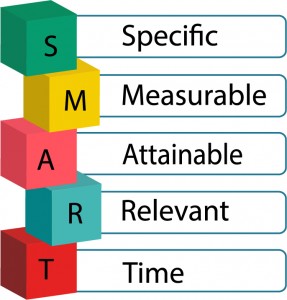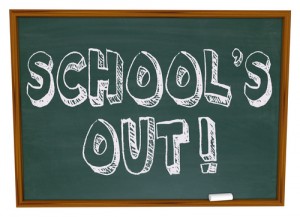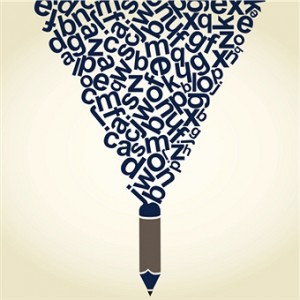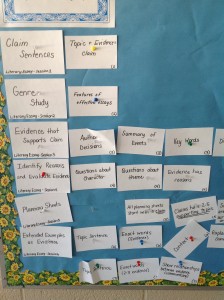 At the end of the year, teachers must officially reflect on their teaching and the impact that it had on kids. Now, this is not to say that teachers don’t reflect throughout the year and observe the impact they have on their students, but it is hard to avoid this question at the end of the year. So, I took out my neatly labeled evaluation folder and looked at my goals. My district requires that I write 3 goals that align with curriculum standards, but also with our district goals. We write these in the SMART (specific, measurable, attainable, realistic, timely) goal format. While, I’m a methodical and organized person, I realized quickly that my projected outcomes turned out very differently than I expected. Additionally, my actual student outcomes produced additional questions I need to consider.
At the end of the year, teachers must officially reflect on their teaching and the impact that it had on kids. Now, this is not to say that teachers don’t reflect throughout the year and observe the impact they have on their students, but it is hard to avoid this question at the end of the year. So, I took out my neatly labeled evaluation folder and looked at my goals. My district requires that I write 3 goals that align with curriculum standards, but also with our district goals. We write these in the SMART (specific, measurable, attainable, realistic, timely) goal format. While, I’m a methodical and organized person, I realized quickly that my projected outcomes turned out very differently than I expected. Additionally, my actual student outcomes produced additional questions I need to consider.
Knowing the importance of our district’s technology goal and my own desire to incorporate technology into my teaching practice, I set a goal to create digital Reading/Writing notebooks. In an earlier post, I wrote about my school introducing 1:1 iPads as part of the 1:world project . My plan, subsidized by a small district grant, was to offer students the same notebook experience we used in a workshop classroom, but in a digital format. I researched and realized that Evernote had a sister app that uses styluses for writing rather than a keyboard. With the purchase of Evernote Premium, I could also share out whole notebooks with users, like my students. I thought that this would be a good option for kids.
 Still, this brings up an issue I’m still pondering: I believe that in order to consider work truly digital it must be transformed technology–not able to be created without technology. Clearly, we were already doing this notebook work before technology, so how did this digital version help to accomplish my goal? My students and I quickly realized that styluses leave many things to be desired, and we knew that simply putting this work in an online notebook versus a regular notebook wasn’t enhancing the writing process so much. So, I was on my way to creating a digital reading/writing notebook as my goal stated, but at this point, I had to alter the the attainable part of this goal.
Still, this brings up an issue I’m still pondering: I believe that in order to consider work truly digital it must be transformed technology–not able to be created without technology. Clearly, we were already doing this notebook work before technology, so how did this digital version help to accomplish my goal? My students and I quickly realized that styluses leave many things to be desired, and we knew that simply putting this work in an online notebook versus a regular notebook wasn’t enhancing the writing process so much. So, I was on my way to creating a digital reading/writing notebook as my goal stated, but at this point, I had to alter the the attainable part of this goal.
As an open-minded and reflective educator, I realized we needed to shift our use of this wonderful tool. As we did this work, I had paper/pencil versions of assignments, notebook tape-ins, examples, etc. available for students to use if they chose to, but I also had opportunities for digital versions, such as an electronic peer review or generating maps. I have to admit that this dual opportunity was more for my benefit in case the digital version didn’t work (if students were unable to load a file or to work collaboratively).
Along with this shift and my first questions, I set a second goal to use a digital notebook to enhance collaborative feedback between students and between teacher and students. By setting this additional goal, there was now a purpose for the online work that could professionally enhance my practice and the reading and writing of my kids. My students and I quickly transferred to all digital reading and writing work. It was user-friendly, and I thought it was important for students to learn how to use technology in a positive way and in a way that could grow their reading and writing skills.
 Then, I found myself with a day of digital mishaps that opened the opportunity for students to choose how they organized and crafted their work. I punted quickly with paper copies of the work or the choice for students to create their own page of notes and examples rather than using my digital versions. Students made their choices, and we moved forward with learning for the day. The next day, with all technology working, a student inquired if I had any paper copies like yesterday. This simple question gave me pause. I was embarrassed. I used to be so proud of the choices I provided the students in my classroom, and even more proud when they found their niche and created something that was special to them. I also used to cherish the beauty and variety that students brought to their notebooks – they had my lesson labels and tape-in notes, but they had doodles that added beauty to their pages and colors that shone through the typed notes, as well as messy, but purposeful writing. Now, the beautiful handwriting scripts are gone as are the doodles in the page margins. Their work is still unique in their content and their work is still special to who they are as writers, but it looks very uniform. When I paused, I realized that I also missed my colorful handwritten pages and the little anecdotes from kids that I would add. I got so caught up in using the technology because it was my goal that I forgot about being the teacher that I was.
Then, I found myself with a day of digital mishaps that opened the opportunity for students to choose how they organized and crafted their work. I punted quickly with paper copies of the work or the choice for students to create their own page of notes and examples rather than using my digital versions. Students made their choices, and we moved forward with learning for the day. The next day, with all technology working, a student inquired if I had any paper copies like yesterday. This simple question gave me pause. I was embarrassed. I used to be so proud of the choices I provided the students in my classroom, and even more proud when they found their niche and created something that was special to them. I also used to cherish the beauty and variety that students brought to their notebooks – they had my lesson labels and tape-in notes, but they had doodles that added beauty to their pages and colors that shone through the typed notes, as well as messy, but purposeful writing. Now, the beautiful handwriting scripts are gone as are the doodles in the page margins. Their work is still unique in their content and their work is still special to who they are as writers, but it looks very uniform. When I paused, I realized that I also missed my colorful handwritten pages and the little anecdotes from kids that I would add. I got so caught up in using the technology because it was my goal that I forgot about being the teacher that I was.
Admittedly, I couldn’t say that the shift was all bad. I also had to stop and consider if any of the digital work was good for kids, and I realized some significant outcomes.
- Students received more direct, consistent feedback from me than they had in the past.
- Students had a record of the feedback notes rather than just verbal notes they had to remember.
- I also realized that they now had opportunities to read the work of students who weren’t in their class. With shared folders on Google Drive, students could see, read, and comment across class sections.
- I was also able to offer more short, consistent feedback pieces between students, which students even began requesting.
- Also, students were able to easily research online.
- And they increased their audience beyond our school classroom due to online publishing opportunities.
 As I reflect at the end of the year, I recall what a mentor said to me–that with older students like mine, I could let them choose. She suggested a short research project where kids choose a way to do their writing work as I offer them options and teach about how writing in different genres requires different tools. I know now that my projected outcomes differed from my goal statements because we had to find the right tools for our needs. While I did accomplish my goal – incorporating a digital reading/writing notebook into students’ practice, I am left with my second question: what is a workshop teacher to do without paper notebooks? And I am still thinking about how digital work can enhance the reading/writing workshop in my classroom.
As I reflect at the end of the year, I recall what a mentor said to me–that with older students like mine, I could let them choose. She suggested a short research project where kids choose a way to do their writing work as I offer them options and teach about how writing in different genres requires different tools. I know now that my projected outcomes differed from my goal statements because we had to find the right tools for our needs. While I did accomplish my goal – incorporating a digital reading/writing notebook into students’ practice, I am left with my second question: what is a workshop teacher to do without paper notebooks? And I am still thinking about how digital work can enhance the reading/writing workshop in my classroom.
 Amy Gurney is an 8th grade Language Arts teacher for Bloomfield Hills School District. She was a facilitator for the release of the MAISA units of study. She has studied, researched, and practiced reading and writing workshop through Oakland Schools, The Teacher’s College, and action research projects. She earned a Bachelor of Science in Education at Central Michigan University and a Master’s in Educational Administration at Michigan State University.
Amy Gurney is an 8th grade Language Arts teacher for Bloomfield Hills School District. She was a facilitator for the release of the MAISA units of study. She has studied, researched, and practiced reading and writing workshop through Oakland Schools, The Teacher’s College, and action research projects. She earned a Bachelor of Science in Education at Central Michigan University and a Master’s in Educational Administration at Michigan State University.

 Several years ago, I developed an inquiry question that asked if students use the language of workshop. Because I consistently use the “ELA Speak” of mentor texts, seed ideas, and generating strategies, I questioned, do students know these terms and use them to forge work?
Several years ago, I developed an inquiry question that asked if students use the language of workshop. Because I consistently use the “ELA Speak” of mentor texts, seed ideas, and generating strategies, I questioned, do students know these terms and use them to forge work?